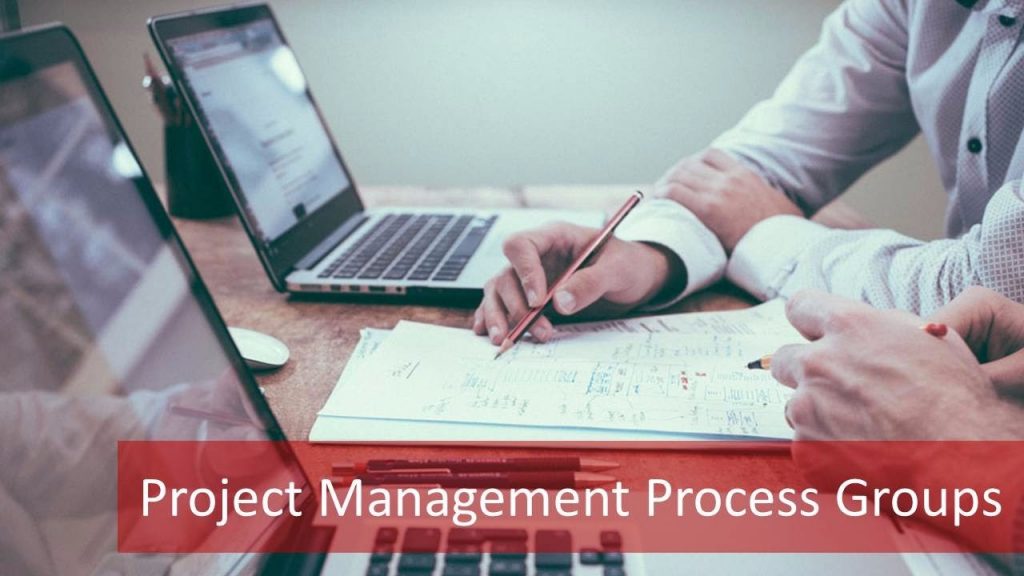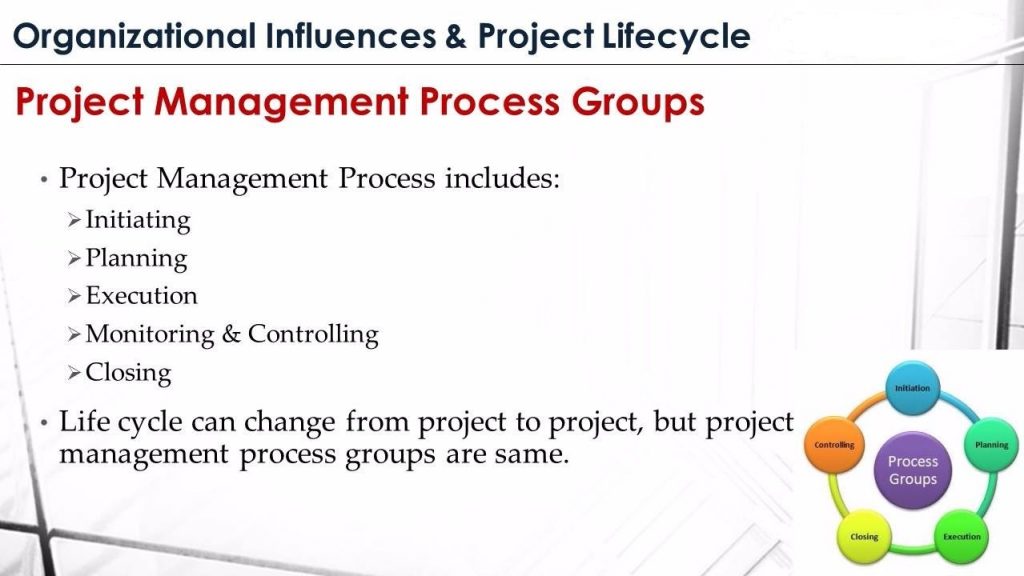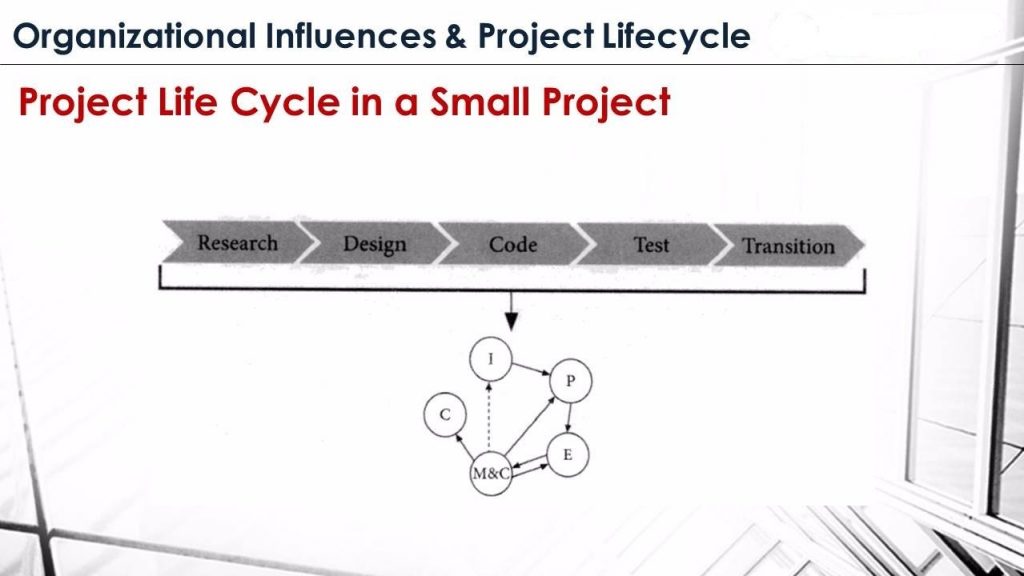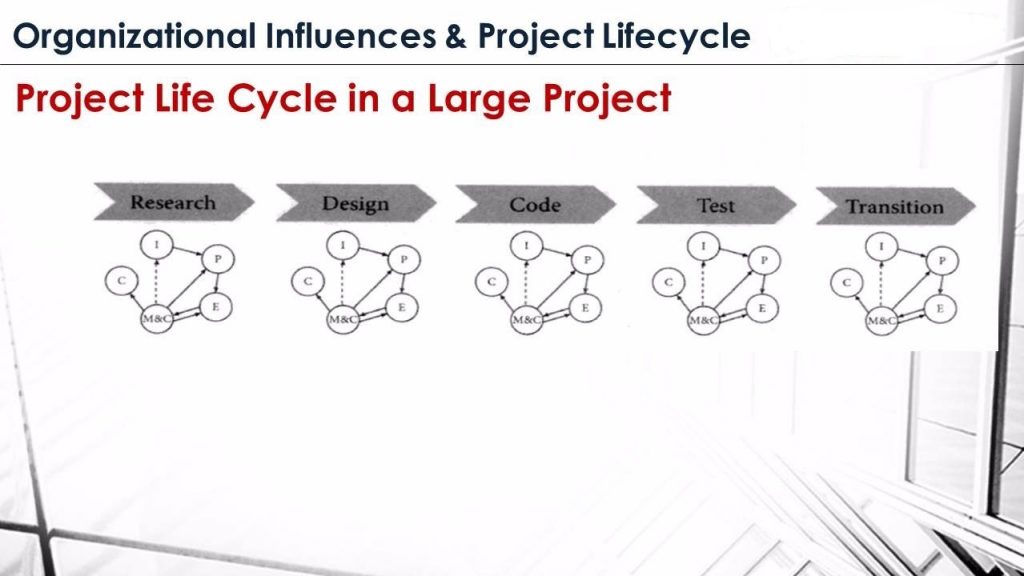- Understanding Agile Methodologies and Principles | A Complete Tutorial
- What is a Work Breakdown Structure (WBS)? | Learn Overview, Steps, Benefits
- Traditional Project Management Tutorial | A Comprehensive Guide
- Total Quality Management (TQM): Complete Guide [STEP-IN]
- Total Productive Maintenance Tutorial | Get an Overview
- Virtual Team Tutorial – Learn Origin, Definition and its Scope
- The Rule of Seven in Project Management – Tutorial
- Make or Buy Decision – A Derivative Tutorial for Beginners
- What is Halo Effect? | Learn More through Tutorial
- Balanced Score Card Tutorial | Learn with Definition & Examples
- What is Supply Chain Management? | Tutorial with Examples
- Succession Planning Tutorial | A Complete Guide with Definitions
- What is Structured Brainstorming? | Quickstart & Learn the Tutorial
- Stress Management Tutorial | A Comprehensive Guide for Beginners
- What is a Statement of Work? | Learn with Definition & Examples
- What is Stakeholder Management? – The Ultimate Guide for Beginners
- How to Create a Staffing Management Plan? | Learn from Tutorial
- What is Resource Leveling? | A Comprehensive Tutorial
- Requirements Collection Tutorial: Gather Project Needs
- What Is a RACI Chart? | Learn with Example & Definitions
- Quality Assurance vs Quality Control: Tutorial with Definitions & Differences
- Project Workforce Management Tutorial | A Definitive Guide
- Project Time Management Tutorial: Strategies, Tips & Tools
- Project Management Success Criteria Tutorial | Understand and Know More
- Identify Risk Categories in Project Management | A Comprehensive Tutorial
- Project Records Management Tutorial | Quickstart -MUST READ
- Project Quality Plan (PQP) Tutorial | Ultimate Guide to Learn [BEST & NEW]
- Project Portfolio Management | A Defined Tutorial for Beginners
- Goals of a Project Manager Tutorial | The Ultimate Guide
- Project Management Triangle Tutorial: What It Is and How to Use
- Project Management Tools Tutorial | Learn Tools & Techniques
- What is PMO (project management office)? | A Complete Tutorial from Scratch
- Project Management Lessons | Learn in 1 Day [ STEP-IN ]
- What is a Project Kickoff Meeting? | Learn Now – A Definitve Tutorial
- Project Cost Management Tutorial | Steps, Basics, and Benefits
- Types of Contracts in Project Management | Learn with Examples
- Project Activity Diagram | Ultimate Guide to Learn [BEST & NEW]
- What is Project Procurement Management? | Tutorial Explained
- Procurement Documents Tutorial | The Ultimate Guide
- Process-Based Project Management Tutorial: A Beginner’s Guide
- What Is PRINCE2 Project Management? | A Definitive Tutorial for Beginners
- Effective Presentation Skills – Learn More through Tutorial
- Powerful Leadership Skills Tutorial | The Ultimate Guide
- PERT Estimation Technique Tutorial | Explained with Examples
- Pareto Chart Tool Tutorial | Learn Analysis, Diagram
- Organizational Structure Tutorial: Definition and Types
- Negotiation Skills for Project Management | Learn from the Basics
- Monte Carlo Analysis in Project Management Tutorial | A Perfect Guide to Refer
- Effective Management Styles Tutorial | The Ultimate Guide
- Management by Objectives (MBO) Tutorial | Overview, Steps, Benefits
- Leads, Lags & Float – Understand the Difference through Tutorial
- What is Knowledge Management? – Tutorial Explained
- What is Just-in-Time Manufacturing (JIT)? | Know More through Tutorial
- Gantt Chart Tool Tutorial: The Ultimate Guide
- Extreme Project Management Tutorial – Methodology & Examples
- Introduction for Event Chain Methodology Tutorial | Guide For Beginners
- Enterprise Resource Planning (ERP) | A Complete Tutorial for Beginners
- What Is Design of Experiments (DOE)? | Learn Now – A Definitve Tutorial
- Decision Making Tutorial – Know about Meaning, Nature, Characteristics
- Critical Path Method Tutorial | How to use CPM for project management
- What is Critical Chain Project Management? | A Complete Tutorial
- What is Conflict Management? | Learn the Definition, styles, strategies through Tutorial
- Effective Communication Skills Tutorial – Definitions and Examples
- Communication Models Tutorial – Project Management
- Methods of Communication Tutorial | A Complete Learning Path
- Communication Management Tutorial | Know more about Plans & Process
- What are Communication Channels? | Learn Now Tutorial
- Communication Blocker Tutorial | Explained with Examples
- Cause and Effect Diagrams Tutorial | The Ultimate Guide
- What is Benchmarking? | Technical & Competitive Tutorial
- Seven Processes of Prince2 Tutorial | Everything you Need to Know
- Design Thinking Tutorial – Quick Guide For Beginners
- What is Performance Testing | A Complete Testing Guide With Real-Time Examples Tutorial
- What is Confluence? : Tutorial For Beginners | A Complete Guide
- Lean Six Sigma Tutorial
- Agile Scrum Tutorial
- PMI-RMP Plan Risk Management Tutorial
- Designing the Blueprint Delivery Tutorial
- What is Confluence? : Tutorial For Beginners | A Complete Guide
- Program Benefits Management Tutorial
- Continuous Improvement – Agile Value Stream Mapping
- Program Organization Tutorial
- Risk and Issue Management Tutorial
- Project Integration Management Tutorial
- Planning and Control Tutorial
- Program Management Principles Tutorial
- program strategy Alignment Tutorial
- PMP Tutorial
- Program Governance Tutorial
- Program Life Cycle Management Tutorial
- PMP Exam Preparation Tutorial
- PMI-PgMP Tutorial
- Agile Methodologies and Frameworks- Kanban and Lean Management Tutorial
- JIRA Tutorial
- Primavera P6 Tutorial
- Understanding Agile Methodologies and Principles | A Complete Tutorial
- What is a Work Breakdown Structure (WBS)? | Learn Overview, Steps, Benefits
- Traditional Project Management Tutorial | A Comprehensive Guide
- Total Quality Management (TQM): Complete Guide [STEP-IN]
- Total Productive Maintenance Tutorial | Get an Overview
- Virtual Team Tutorial – Learn Origin, Definition and its Scope
- The Rule of Seven in Project Management – Tutorial
- Make or Buy Decision – A Derivative Tutorial for Beginners
- What is Halo Effect? | Learn More through Tutorial
- Balanced Score Card Tutorial | Learn with Definition & Examples
- What is Supply Chain Management? | Tutorial with Examples
- Succession Planning Tutorial | A Complete Guide with Definitions
- What is Structured Brainstorming? | Quickstart & Learn the Tutorial
- Stress Management Tutorial | A Comprehensive Guide for Beginners
- What is a Statement of Work? | Learn with Definition & Examples
- What is Stakeholder Management? – The Ultimate Guide for Beginners
- How to Create a Staffing Management Plan? | Learn from Tutorial
- What is Resource Leveling? | A Comprehensive Tutorial
- Requirements Collection Tutorial: Gather Project Needs
- What Is a RACI Chart? | Learn with Example & Definitions
- Quality Assurance vs Quality Control: Tutorial with Definitions & Differences
- Project Workforce Management Tutorial | A Definitive Guide
- Project Time Management Tutorial: Strategies, Tips & Tools
- Project Management Success Criteria Tutorial | Understand and Know More
- Identify Risk Categories in Project Management | A Comprehensive Tutorial
- Project Records Management Tutorial | Quickstart -MUST READ
- Project Quality Plan (PQP) Tutorial | Ultimate Guide to Learn [BEST & NEW]
- Project Portfolio Management | A Defined Tutorial for Beginners
- Goals of a Project Manager Tutorial | The Ultimate Guide
- Project Management Triangle Tutorial: What It Is and How to Use
- Project Management Tools Tutorial | Learn Tools & Techniques
- What is PMO (project management office)? | A Complete Tutorial from Scratch
- Project Management Lessons | Learn in 1 Day [ STEP-IN ]
- What is a Project Kickoff Meeting? | Learn Now – A Definitve Tutorial
- Project Cost Management Tutorial | Steps, Basics, and Benefits
- Types of Contracts in Project Management | Learn with Examples
- Project Activity Diagram | Ultimate Guide to Learn [BEST & NEW]
- What is Project Procurement Management? | Tutorial Explained
- Procurement Documents Tutorial | The Ultimate Guide
- Process-Based Project Management Tutorial: A Beginner’s Guide
- What Is PRINCE2 Project Management? | A Definitive Tutorial for Beginners
- Effective Presentation Skills – Learn More through Tutorial
- Powerful Leadership Skills Tutorial | The Ultimate Guide
- PERT Estimation Technique Tutorial | Explained with Examples
- Pareto Chart Tool Tutorial | Learn Analysis, Diagram
- Organizational Structure Tutorial: Definition and Types
- Negotiation Skills for Project Management | Learn from the Basics
- Monte Carlo Analysis in Project Management Tutorial | A Perfect Guide to Refer
- Effective Management Styles Tutorial | The Ultimate Guide
- Management by Objectives (MBO) Tutorial | Overview, Steps, Benefits
- Leads, Lags & Float – Understand the Difference through Tutorial
- What is Knowledge Management? – Tutorial Explained
- What is Just-in-Time Manufacturing (JIT)? | Know More through Tutorial
- Gantt Chart Tool Tutorial: The Ultimate Guide
- Extreme Project Management Tutorial – Methodology & Examples
- Introduction for Event Chain Methodology Tutorial | Guide For Beginners
- Enterprise Resource Planning (ERP) | A Complete Tutorial for Beginners
- What Is Design of Experiments (DOE)? | Learn Now – A Definitve Tutorial
- Decision Making Tutorial – Know about Meaning, Nature, Characteristics
- Critical Path Method Tutorial | How to use CPM for project management
- What is Critical Chain Project Management? | A Complete Tutorial
- What is Conflict Management? | Learn the Definition, styles, strategies through Tutorial
- Effective Communication Skills Tutorial – Definitions and Examples
- Communication Models Tutorial – Project Management
- Methods of Communication Tutorial | A Complete Learning Path
- Communication Management Tutorial | Know more about Plans & Process
- What are Communication Channels? | Learn Now Tutorial
- Communication Blocker Tutorial | Explained with Examples
- Cause and Effect Diagrams Tutorial | The Ultimate Guide
- What is Benchmarking? | Technical & Competitive Tutorial
- Seven Processes of Prince2 Tutorial | Everything you Need to Know
- Design Thinking Tutorial – Quick Guide For Beginners
- What is Performance Testing | A Complete Testing Guide With Real-Time Examples Tutorial
- What is Confluence? : Tutorial For Beginners | A Complete Guide
- Lean Six Sigma Tutorial
- Agile Scrum Tutorial
- PMI-RMP Plan Risk Management Tutorial
- Designing the Blueprint Delivery Tutorial
- What is Confluence? : Tutorial For Beginners | A Complete Guide
- Program Benefits Management Tutorial
- Continuous Improvement – Agile Value Stream Mapping
- Program Organization Tutorial
- Risk and Issue Management Tutorial
- Project Integration Management Tutorial
- Planning and Control Tutorial
- Program Management Principles Tutorial
- program strategy Alignment Tutorial
- PMP Tutorial
- Program Governance Tutorial
- Program Life Cycle Management Tutorial
- PMP Exam Preparation Tutorial
- PMI-PgMP Tutorial
- Agile Methodologies and Frameworks- Kanban and Lean Management Tutorial
- JIRA Tutorial
- Primavera P6 Tutorial

PMI-PgMP Tutorial
Last updated on 26th Sep 2020, Blog, Project Management, Tutorials
The Program Management Professional (PgMP)® credential from Project Management Institute (PMI)® is the next step after Project Management Professional (PMP)® Certification, and addresses the community of professionals who are responsible for the coordinated management of multiple projects that are in alignment with organizational objectives. They are required to direct and manage complex activities that may span functions, organizations, cultures and geographies.
Our comprehensive workshop covers the Project Management process from beginning to end, honing your skills in the six prime focus areas: Governance, Prioritization, Escalation, Resource Management, Benefits Realization, and Stakeholder Management. As a PgMP® credential holder, you will be able to promote better integration and coordination of multiple projects for the overall benefit of the program.
What are PMI-PgMP® and PMI
PMI-PgMP® stands for Program Management Professional. It is the name of the certificate awarded to those who pass all the evaluation stages of the PgMP.
As is evident from the name, this tutorial is for those who are interested in program management as a career.
PgMP qualification on a resume would be very helpful to move up the career ladder, and take up senior and executive level positions within organizations, while working on strategic programs. PgMP is not restricted to a specific domain.
A program manager working in any industry, be it Manufacturing, Retail, Defense, or Information Technology, can apply to become a PgMP.
Now let us look at PMI.
PMI stands for Project Management Institute. It is a non-profit organization that conducts the PgMP Examination.
PMI is based in the USA and has local chapters across the globe. So, if you are based in Singapore, you can look for a PMI chapter in Singapore. Such local chapters conduct regular knowledge sharing and networking sessions for people who are interested in project management.
What is a Project?
Before discussing programs, let us recall what a project is. This is important because the project is the building block for a program as well as a portfolio, and indeed any organizational task that results in a change in the status quo.
PMI defines a project as a “temporary endeavor undertaken to create a unique product, service, or result.” Based on this definition, we can make out that a project has two key characteristics.
Firstly, it’s temporary in nature. Please note that temporarily does not mean short in duration.
A project can go on for several years.
For example, creating a new “Indigenous Missile Defense System” for a country can be a project that can span several years. However, there is always a definitely planned start and end date for a project. It cannot go on indefinitely.
Secondly, the project is supposed to produce a unique output. The output could be a product, service, or a result. There can be many common activities between two projects, but the outcome of each project should be unique in some way or the other.
What Is Project Management Framework?
A project management framework consists of the processes, tasks, and tools used to take a project from start to finish. It encompasses all the key components required for planning, managing, and governing projects.
The project management framework can be broken into three parts:
Project lifecycle: This is the cycle a project goes through from beginning to end.
It consists of five phases:
- 1. Initiation
- 2. Planning
- 3. Execution
- 4. Monitoring & controlling
- 5. Closure
Project control cycle: The control cycle is the process of monitoring and controlling the project.
Tools and templates: Project plans, project management reports, and risk logs are common tools and templates used for managing projects.
6 project management frameworks
There are many project management frameworks you can choose to use.
Here are 6 of the most common ones:
- 1. PRINCE2: This framework is highly structured with a heavy emphasis on upfront planning.
- 2. CCPM (critical chain project management): Critical chain focuses primarily on resource allocation across the project.
- 3. Lean: A lean framework focuses on minimizing wasted effort and resources. Process improvement techniques are often incorporated into this framework.
- 4. XPM (extreme project management): XPM was designed for complex projects that occur in fast-changing environments. Emphasis is on stakeholder management as plans and schedules are rapidly changing.
- 5. Scrum: This framework was also designed for industries undergoing rapid change. Using this framework, projects are often broken down and planned in 2-4 week sprints.
- 6. Waterfall: This framework is one of the traditional approaches to project management. Waterfall requires a project to be planned beginning to end, with no phase of a project beginning until the previous one has ended.
Subscribe For Free Demo
Error: Contact form not found.
How to choose a project management framework
One single framework does not work for all projects, which is why so many of them have been created over the years. When deciding which framework is best for your project, consider the following:
- If your industry, technology, or product is fast-changing, an adaptable framework such as XPM or scrum is recommended.
- If the project deliverable is not well defined and is intangible in nature (such as software), a sprint approach (such as scrum) may work best.
- If the project is well-defined and stable, planning it out in its entirety decreases risks. Therefore, PRINCE2 or waterfall should work best.
- Frameworks may be chosen based on what your organization and stakeholders are familiar with. If your company has never completed an XPM project before, introducing one may be difficult.
- The priorities of your stakeholders will impact your framework. If waste is a critical concern, a lean framework may be chosen.
- Frameworks are designed to be flexible and adapt to the needs of a project. It may be that you will end up borrowing pieces of separate frameworks as the circumstances of your project change.
Project Management has several knowledge areas. The project management processes are a part of those project management knowledge areas. All of these project management processes belong to five major project management process groups. These project management process groups are called initiating, planning, executing, monitoring and controlling and closing.

What are the project management process groups? What is the purpose of each project management process group? What are the relations between these process groups? How are these project management process groups related to each other? Are the process groups the same in all types of projects?
We are going to review the five Project Management Process Groups during this article. These are part of project management knowledge. If you desire to get more information about project management visit our CAPM® course page and enroll for this self-paced, high-quality online training.
What are the Project Management Process Groups?
We can state five project management process groups which are the phases of the project life cycle.
These process groups are:

- Initiating phase triggers the planning process group. After preparing the required documents and steps for initiating the project the next process group begins.
- Planning phase triggers the execution process group. The project must have a proper planning in order to start the execution phase.
- Execution is the phase where the most of the project work is delivered.
- Monitoring and controlling is the only project management process group that interacts with all other four. In this phase, the project team checks whether everything is going as planned.
- Closing helps to close the project after all objectives are met.
Note that the project life cycle can change from project to project. It may also change depending on the industry. Even if the life cycle changes, the project management process groups are always the same.

Interrelationship Between the Project Management Process Groups

This figure shows the interrelationship of project management process groups with each other. As you see, initiating a process group triggers the planning process group. So when the documents and the steps are ready to initiate a project, the planning phase starts.
Then, the planning process group triggers the execution process group. After proper planning of the project, the execution phase starts. This is the phase where the most of the project work is delivered.
Monitoring & Controlling process group is the only process group that interacts with all other four project management process groups. Because this process group checks whether the project is going as planned and whether everything is going smoothly.
The last project management process group is the closing phase. The closing process group helps to complete and close the project after all objectives of the project are met. Or another possibility is that the project may have been terminated in the middle.
Note that project management processes are documented and controlled by the help of project management templates. You can see sample free project management templates to have an idea of how they work.
The Difference Between the Project Management Process Groups Between Small and Large Projects
The processes under all these project management process groups should be initiated and executed in each project. But they are not initiated or executed in the same way in all types of projects. The size of the project defines how the process groups are

As you notice in the figure above, in a small project, all of these phases can be planned as one whole project. Because these phases are not really complex and they don’t require complicated steps to take.

On the other hand, as you see in the second figure if the project is a large one this should also mean that if each one of its phases is big enough to be considered as a separate project. Then, these project management process groups are initiated and executed separately. In other words, during each phase of a large project, there is a small project going on with its own project management process groups.
One should have knowledge in areas
- Integration management
- Scope management
- Time management
- Cost management
- Quality management
- Human resource management
- Communication management
- Risk management
- Procurement management
- Stakeholder management
The Project Management Institute (PMI®) gives a professional credential for program managers, identified as the Program Management Professional (PgMP). The PgMP exam is a lively part of the activities driving to obtaining a professional credential, thus it is important that the PgMP examination reflects exactly the practices of the program management professional. The Program Management Professional (PgMP) certification acknowledges advanced experience, skill, and achievement in the overlooking of multiple, related projects, and their sources followed with an organizational objective.
Program Management Professional (PgMP) certification possessors supervise the progress of a program — a way to group multiple, associated projects to obtain benefits that may not be received if the projects were managed in a stand-alone fashion. As project managers progress in their careers, the knowledge they gain in managing multiple, related projects and making decisions that advance strategic and business objectives shows this competence.
PgMP credential holders can be confident that their professional credential has been developed according to best practices of test development and based upon input from the practitioners who establish those standards.
Who Should Apply?
If you have the proven ability to manage multiple, related projects and navigate complex activities that span functions, organizations, regions, or cultures and to align results with organizational goals, then you’re a potential PgMP.
Learning Objectives
The candidates should know the objectives for the Program Management Professional (PgMP) in order to prepare for it. The candidate can download the exam guide from the official website of PMI. The objectives for PgMP are:
- 1. Strategic Program Management
- 2. Program Life Cycle
- 3. Benefits Management
- 4. Stakeholder Management
- 5. Governance
Learning Path
PMI allows a complete certification program for practitioners with many various levels of education and experience. There are currently eight certifications that are developed and maintained through a vigorous process.

Program Benefits Management – Knowledge and Skills
The following are the knowledge areas and skills required for program benefits management:
- Benefits optimization to ensure strategies are employed to deliver maximum benefits
- Business value measurement to be able to quantify and articulate the business benefits delivered
- Decision tree analysis to be able to make decisions that maximize the benefits and reduce the threats to benefits realization
- Maintenance and sustainment of program benefits post-delivery
- Performance and quality metrics to be able to quantify the factors that contribute to the benefits
- Program transition strategies to be able to smoothly transition to the recipient organizations.
